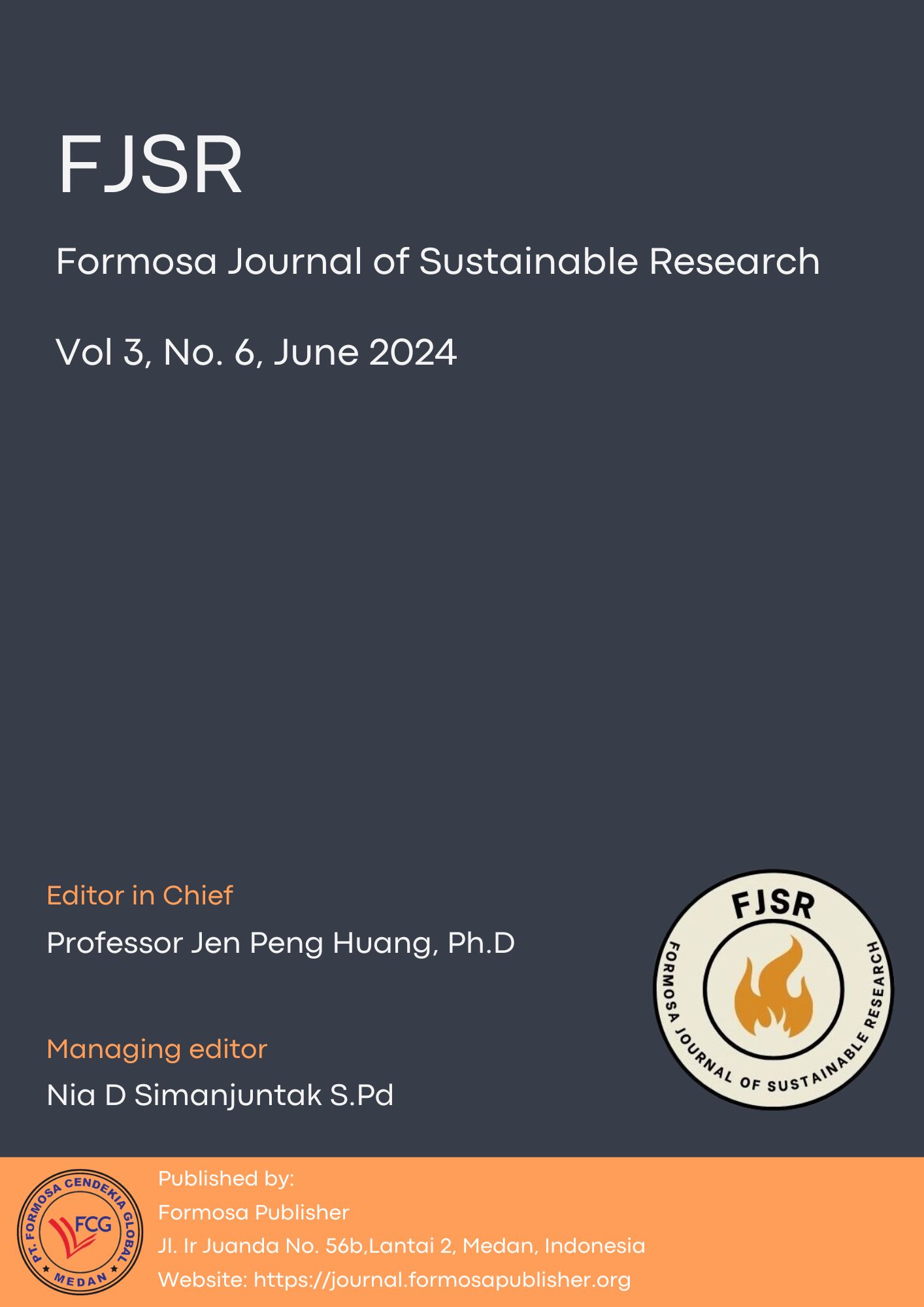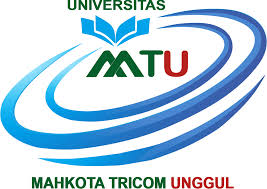Formulation and Physical Stability Test of Gel Hand and Body Lotion Methanol Extract of Belimbing Darah Leaves (Baccaurea Angulata)
DOI:
https://doi.org/10.55927/fjsr.v3i6.9362Keywords:
Antioxidant, Starfruit, Formulation, LotionAbstract
Antioxidants are chemicals or components that, when present in certain amounts, can prevent or slow down damage caused by the oxidation process. The gel composition has high moisturizing properties due to the high water content. Additionally, it provides a pleasant cooling sensation, making it ideal for use in hot weather conditions. Additionally, it is very good for people with oily skin. The aim of this research was to develop a formulation for an antioxidant gel that includes extracts from blood clot leaves. Baccaurea angulata is blood leaf obtained through a maceration process using methanol as a solvent. Next, the extract is converted into a gel by changing the concentration, which can be 10%, 20%, or 30%. After that, the gel undergoes a physical stability test called Test Cycling, which involves organoleptic tests, homogeneity tests, pH tests, and uniformity tests. The results show that making hand gel and body lotion using methanol leaf extract has excellent physical stability. Among the three different formulations, formula I (10%) is the most superior formulation
Downloads
References
Ahmed IA, Mikail MA, Ibrahim M, Hazali N, Rasad MSBA, Gani RA, Wahab RA, Arief SJ, Yahya MNA. 2014. Antioxidant actovity and phenolic profile of various morphological parts of underutilized Baccaurea angulata fruit. Food Chemistry.
Allen, L. V., 2002, The Art, Science and Technology of Pharmaceutical Compounding, Second Edition, 170-173, 183, 187, American Pharmaceutical Association, Washington D.C.
Amin R, Nabi MN. 2015. Evaluation of cytotoxic and antioxidant activity of different fractions of methanolic extract of Baccaurea ramiflora (Lour.) fruits. International Current Pharmaceutical Journal. 4(6): 386-389.
Azhara, Nurul Khasanah (2011), Waspada Bahaya Kosmetik, Jakarta FlashBooks.
Culvenor C.C.J. and J.S. Fitzgerald, 1963. A Field Methods for Alkaloids Screening of Plants. J.Pharm. Sci, 52, 303-304
Departemen Kesehatan Republik Indonesia, 1979, Farmakope Indonesia, Edisi III., Departemen Kesehatan Republik Indonesia, Jakarta.
Departemen Kesehatan Republik Indonesia, 2008, Farmakope Herbal Indonesia, Departemen Kesehatan Republik Indonesia, Jakarta.
Departemen Kesehatan Republik Indonesia. (1978). Formularium Nasional, Edisi Kedua. Direktorat Jendral Pengawasan Obat dan Makanan. Jakarta, hal 14
Departemen Kesehatan Republik Indonesia. (2000). Parameter Standar Umum Ekstrak Tumbuhan Obat cetakan pertama, Jakarta: Departemen Kesehatan republik Indonesia.
Ditjen POM. 1979. Farmakope Indonesia. Edisi III. Depkes RI. Jakarta Dixon R, Paiva N.L. 1995. Stress-induced phenylopropanoid metabolism. Plant Cell 7.
Elfasyari, T. Y., Putri, L. R., & Wulandari, S. (2019). Formulasi dan Evaluasi Gel Antioksidan Ekstrak Daun Bidara (Ziziphus jujuba Mill.). PHARMACY: Jurnal Farmasi Indonesia (Pharmaceutical Journal of Indonesia), 16(2), 278. https://doi.org/10.30595/pharmacy.v16i2.5639
Engl, S. L. (2018). Rendemen Ekstrak Daun Rambai Laut. 4(1), 79–83. Samarinda : Akademi Farmasi Samarinda.
Erawati, E., Pratiwi, D. dan Zaky, M. 2016. Pengembangan formulasi dan evaluasi fisik sediaan krim ekstrak etanol 70% daun labu siam (Sechium edule (Jacq.) Swatz). Farmagazine 3(1) : 11-20.
Farmakope Indonesia Edisi V. Jakarta: Departemen Kesehatan Republik Indonesia, 2014.
Gad S.C., 2008, Pharmaceutical Manufacturing Handbook: Production and Processes, A John Wiley & Sons, Inc., New Jersey
Gunawan I. Perbandingan pH dan Daya Sebar Krim Ekstrak Kulit Nanas (Ananas comosus (L). Merr). J Anal Kesehat. 2018;7(1):680–4.
Haegens, R. 2000. Taxonomy, phylogeny, and biogeography of Baccaurea, Distichirhops, and Nothobaccaurea (Euphorbiaceae). Journal of Plant Taxonomy and Plant Geography, Supplement 12.
Hanani, E, Mun’im A, Sekarini, R. (2005). Identifikasi senyawa antioksidan dalam spons Callyspongia sp. Dari Kepulauan Seribu. Majalah Ilmu Kefarmasian. II (3): 127-133.
Hanani. 2015. Analisis fitokimia. Buku kedokteran EGC: Jakarta
Harahap. 2000. Anatomi dan Fungsi Kulit. Dalam Marwali Harahap: Ilmu Penyakit Kulit. Edisi 1. Jakarta: Hipokrates. Hal 1-3.
Harborne, J.B. (2006). Metode Fitokimia: Penuntun Cara Modern Menganalisis Tumbuhan (alih bahasa: Kosasih Padmawinata & Iwang Soediro). Bandung : Penerbit ITB.
Harborne, J.B., (1987), Metode Fitokimia, Edisi ke dua, ITB, Bandung.
Harvey A. 2000. Strategies for discovering drugs from previously unexplored natural products. Drug Discov Today 5 (7): 294-300.
Hasanah, Uswatun D. Formulasi Gel Ekstrak Etanol Daun Kelor ( Moringa oleifera Lam ) Sebagai Antioksidan Formulation Gel Of Ethanolic’s Extract of The Leaves of Moringa oleifera Lam as an Antioxidant.2017;6(1):46–57.
Hidayah, U. N. W., 2013. Formulasi Sediaan Gel Ekstrak Herba Pegagan (Centella Asiatica L. Urban) Dengan HPMC SH 60 Sebagai Gelling Agent dan Uji Penyembuhan Luka Bakar pada Kulit Punggung Kelinci Jantan. Jurnal Ilmiah Farmasi.12(3) : 1-14
Husnani Firdaus Al Muazham, M. (2017). Optimasi Parameter Fisik Viskositas, Daya Sebar Dan Daya Lekat Pada Basis Natrium Cmc Dan Carbopol 940 Pada Gel Madu Dengan Metode Simplex Lattice Design. Jurnal Ilmu Farmasi Dan Farmasi Klinik, 14(1), 11–18.
Jendral Bina Kefarmasian dan Alat Kesehatan.
Joshita. D, MS., 2008, Kestabilan Obat, Program S2 Ilmu Kefarmasian, Departemen Farmasi FMIPA, Universitas Indonesia.
Kalangi, Sonny. J.R. 2013. Histofisiologi Kulit. Jurnal Biomedik. 5(3) : 12-20
Kementerian Kesehatan RI, 2014, Farmakope Indonesia Edisi V, Direktorat
Kusumawati et al. (2017). Kemampuan antibakteri ekstrak etanol daun nangka (Atrocarpus heterophyllus Lam.) terhadap Esherichia coli. Jurnal Sains Dan Kesehatan, 1(7), 327–332.
Lachman, L., & Lieberman, H. A., 1994, Teori dan Praktek Farmasi Industri, Edisi Kedua, 1091-1098, UI Press, Jakarta.
Lubapepita Triananda, A., & Wijaya, A. (2021). FORMULASI DAN UJI FISIK SEDIAAN GEL EKSTRAK DAUN PETAI CINA (Leucaena leucocephala (Lam.) De. Wit) DENGAN BASIS HYDROXY PROPYL METHYL CELLULOSE (HPMC). Jurnal Kefarmasian Akfarindo, 29–36. https://doi.org/10.37089/jofar.vi0.101
Mardikasari, S. A., Mallarangeng, A. N. T. A., Zubaydah, W. O. S., & Juswita, E. (2017). Formulasi dan Uji Stabilitas Lotion dari Ekstrak Etanol Daun Jambu Biji ( Psidium guajava L .) Sebagai Antioksidan. Jurnal Farmasi Sains Dan Kesehatan, 3(2), 28–32.
Mescher AL. 2010. Junqueira’s Basic Histology Text & Atlas. New York: McGraw Hill Medical
Mikail MA. et al .2015.Baccaurea angulata fruit inhibits lipid peroxidation and inducesthe increase in antioxidant enzyme activities. Eur J Nutr. DOI 10.1007/s00394-015-0961-7.
Momand L, Zakaria R, Mikail M, Jalal T, Ibrahim M, Wahab RA. 2014. Antimicrobial effect. of Baccaurea angulata fruit extracts against human pathogenic microorganisms. Merit Research Journal of Medicine and Medical Sciences 2(10): 229- 237.
Nisa, G. K., Nugroho, W. A., & Hendrawan, Y. (2014). Ekstraksi Daun Sirih Merah (Piper Crocatum) Dengan Metode Microwave Assisted Extraction (MAE). Jurnal Bioproses Komoditas Tropis, 2(1), 72–78. https://doi.org/10.22302/iribb.jur.mp.v87i1.295
Norazlanshah, Afiq M, Muhammad, Masri M. 2015. Determination of phytochemicals and vitamin content of underutilized Baccaurea angulata fruit. J Pharmacognosy and Phytochemsitry4(4): 192-196.
Purgiyanti, Purba, A. V., & Winarno, H. (2019). Penentuan Kadar Fenol Total Dan Uji Aktivitas Antioksidan Kombinasi Ekstrak Herba Pegagan (Centella asiaticaL. Urban) Dan Buah Mahkota Dewa (Phaleria Macrocarpa (Scheff.) Boerl.). Jurnal Ilmiah Farmasi, 8(2), 40–45.
Puspitasari, M. I., Jufri, M., & Azizahwati. (2014). Uji Pengaruh Sediaan Emulgel yang Mengandung Ekstrak Buah Cabai Rawit (Capsicum frutescens L.) Terhadap Aktivitas Lipase Secara In Vitro. Karya Ilmiah.
Rieger, M. M., 2000, Harry’s Cosmeticologi 8th Edition, New York : Chemical Publishing Co. Inc.
Rowe, R.C., Sheskey, P.J., dan Quinn, M.E. (2009). Handbook of Pharmaceutical Excipients. Edisi Keenam. London: Pharmaceutical Press. Hal. 75, 155, 243, 290
Rumagit, Hanna M, Max R.J. Runtuwene, Sri Sudewi. (2015). Uji Fitokimia dan Uji Aktivitas Antioksidan dari Ekstrak Etanol Spons Lamellodysidea herbacea. Fakultas MIPA UNSRAT Manado. Manado.
Sayuti dan Yenrina. 2015. Antioksidan alami dan sintetik. Universitas Andalas, Padang.
Soedirman. (2009). Pengaruh Basis Salep Terhadap Sifat Fisiki Dan Iritasi Primer Ekstrak Etanol Jahe Merah (Zingiber officinale Roxb). Jurnal Pharmacy, 06(1), hal. 45-57.
Syahputri, Mimi. Pemastian Mutu Obat: Kompendium Pedoman & Bahan Bahan terkait Vol.1. Jakarta: EGC, 2005.
Verdiana, M., Widarta, I. W. R., Gede, I. D., & Permana, M. (2018). Ultrasonik Terhadap Aktivitas Antioksidan Ekstrak Kulit Buah Lemon ( Citrus limon ( Linn .) Burm F .). 7(4), 213–222.
Voight, R., 1994, Buku Pengantar Teknologi Farmasi, 572-574, diterjemahkan oleh Soedani, N., Edisi V, Yogyakarta, Universitas Gadjah Mada Press.
Voon, B.H.; Kueh, H.S. 1999. The nutritional value of indigenous fruits and vegetables in Sarawak. Asia Pac. J. Clin. Nutr., 8, 24–31.
Widyaningrum, N., Murrukmihadi, M., & Ekawati, S. K. (2012). Pengaruh Konsentrasi Ekstrak Etanolik Daun Teh Hijau ( Camellia sinesis L .) dalam Sediaan Krim terhadap Sifat Fisik dan Aktivitas Antibakteri. 4, 147–156.
Wijaya, Dwi Putra., Jessy E., Jemmy Abidjulu. 2014. Skrining Fitokimia dan Uji Aktivitas Antioksidan dari Daun Nasi (Phrynium capitatum) dengan Metode DPPH (1,1-difenil-2-pikrihidrazil). Jurnal Kimia FMIPA (1): 11-15.
Downloads
Published
How to Cite
Issue
Section
License
Copyright (c) 2024 Habibie Deswilyaz, Rury Trisa Utami, Viona Nursaputri, Desy Maniarti Gusmali

This work is licensed under a Creative Commons Attribution 4.0 International License.



























